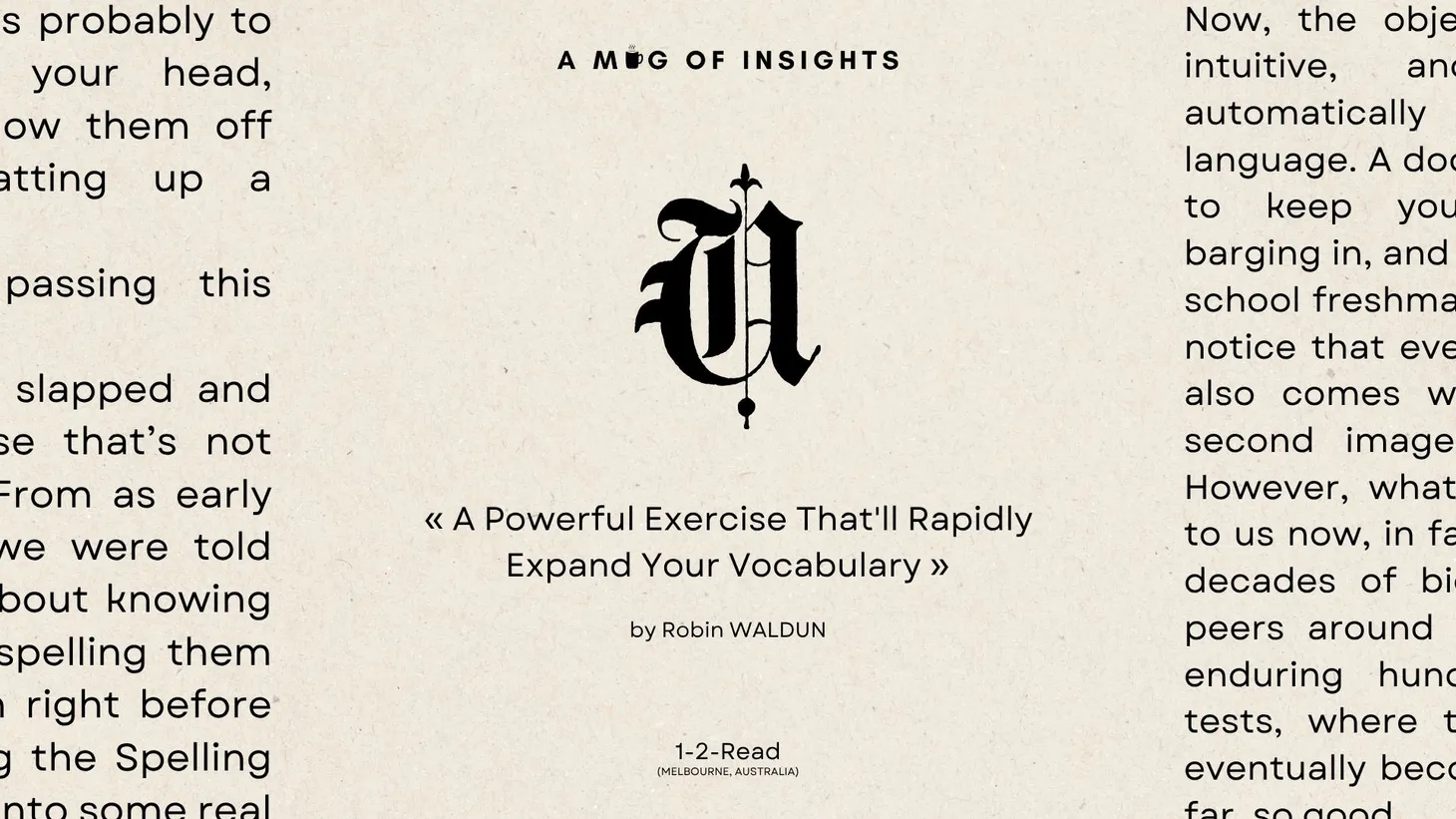[1-2-Read] How To Become A Demanding Reader pt. 1 - Making Distinctions
Giving Away My English Degree pt. 1
![[1-2-Read] How To Become A Demanding Reader pt. 1 - Making Distinctions](/content/images/size/w1460/2025/06/bfdbd0e9-1ba9-44ac-8baa-e1f55b1d8340_1920x1080-jpeg.jpg)
This is another repost of the 1-2-Read newsletter for paid subscribers, where we tackle 1 big idea and give you 2 journaling prompts to strengthen your literacy skills. Your support is the reason why I’m able to offer any value on this platform, and thank you so much for being here.
(1) The Idea: Learning = Making Distinctions
First, this post will kick off a series of letters on the basics of literary criticism taught at the college level. In other words, Captain, we’re moving into phase 2. In the next month or so (maybe longer), I’ll dive back into my university notes, reference material and first-class honours class papers to distil everything you need to know from an English degree.
It’s been an absolute honour to get up here every single week to give something valuable away. Your support has allowed me to do everything I do, and without you guys, I doubt that I’d ever have the time or energy to conceive such an ambitious project. So, without further ado, let's get into it.
Preamble: What Am I Looking At?
The story begins at the National Gallery of Victoria in Melbourne, where I felt totally out of my depth. It started with a text to my partner two days prior: “Hey, are you free on Thursday? Let’s go look at some art.” As someone who is way more attuned to paintings and sculptures than I am, she agreed, and soon we found ourselves in a room full of Dutch still life paintings.
You know that feeling when you end up at a party full of strangers? Or that networking night crammed with impressive people boasting of incredible resumes? Yeah, that feeling paid me a visit when I was standing in that room.
While my partner started to move from the left side of the room to the right, inspecting every painting before giving insightful analyses off-the-cuff, I stood there and felt embarrassed to admit that all I saw were flowers, chickens, stately looking posers and two old men arguing. During that moment, all I could think of was getting a cookie from the cafeteria or going for a walk in the gardens next to the gallery.
She pulled me back and guided me through each painting like a senior teaching a freshman calculus. “The colour is…”, “The subjects are significant because…”, “Look at those two old men, what were they arguing about?” And after an hour of back and forth, I was mentally exhausted and couldn’t help but wonder: how the hell does she know what to look at and how to look at them?
Literature, or writing in general, assumes the same barrier to entry. A work of fiction and a work of philosophy, to the untrained reader, look the same: they’re just words on the page. I still remember how frustrated I felt during my first rodeos with reading literature because I couldn’t tell what made certain words better than others. Isn’t a David Baldacci novel the same as Madame Bovary because they sure as hell look the same in length, format and form?
Then, as time progressed and after declaring a major in literature, I started to tap into what studying words really meant. Some mechanisms make certain stories pop, just like there are ways to interpret deceptively simple paintings. And the role of a literary education, like any education in the arts, is to train your eyes to distinguish form from dialogue, character from description and prose from poetry so that you can go off and make your own judgements. In short, learning how to read has very little to do with eating through the whole Western Canon, but it has everything to do with learning how to make distinctions to free you up to engage with whatever catches your fancy.
So this week, we’ll introduce the first distinction: FORM.
Why do books from different centuries sound different?
This content is for Paid Members
Unlock full access to A Mug of Insights and see the entire library of members-only content.
SubscribeAlready have an account? Log in


![[1-2-Read] How To Stay Informed Without Going Insane](/content/images/size/w1460/format/webp/2025/10/---How-To-Stay-Informed-Without-Going-Insane----1.jpg)
![[1-2-Read] Protocols for Rescuing Your Attention pt. 3: Join The Attention Resistance](/content/images/size/w1460/format/webp/2025/09/-1-2-Read-.jpg)